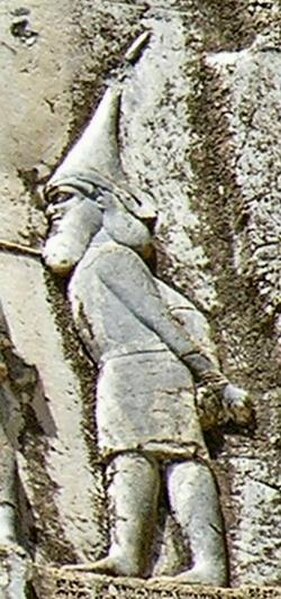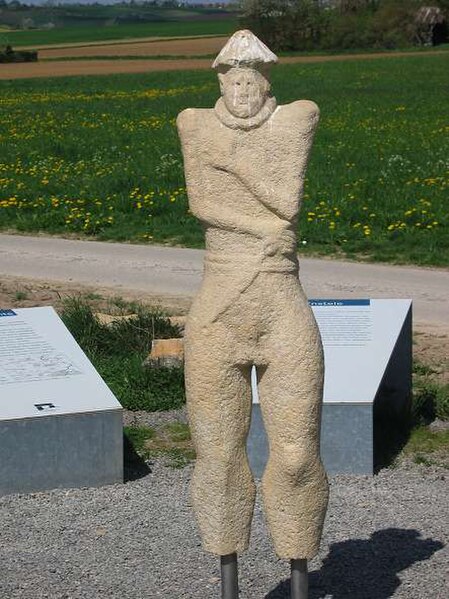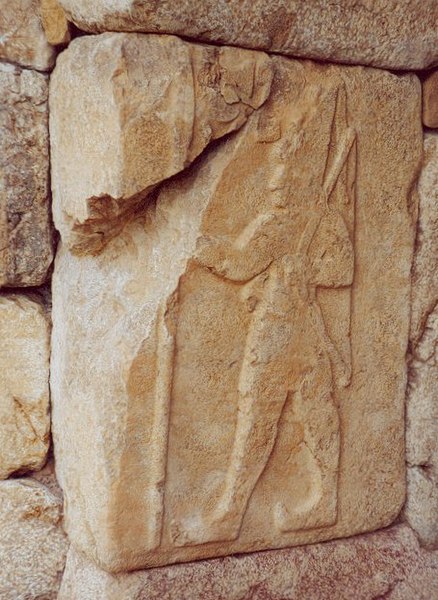The Phrygian cap or liberty cap is a soft conical cap with the apex bent over, associated in antiquity with several peoples in Eastern Europe and Anatolia, including the Persians, the Medes and the Scythians, as well as in the Balkans, Dacia, Thrace and in Phrygia, where the name originated. The oldest depiction of the Phrygian cap is from Persepolis in Iran.
Dacian prisoner with Phrygian cap (Roman statue from the 2nd century)
A Parthian (right) wearing a Phrygian cap; detail from the Arch of Septimius Severus, Rome (203 AD).
Orpheus with Phrygian cap.
Dacian sculpture with Phrygian Cap.
Pointed hats have been a distinctive item of headgear of a wide range of cultures throughout history. Although often suggesting an ancient Indo-European tradition, they were also traditionally worn by women of Lapland, the Japanese, the Mi'kmaq people of Atlantic Canada, and the Huastecs of Veracruz and Aztec. The Kabiri of New Guinea have the diba, a pointed hat glued together.
John Michael Wright, Mrs Salesbury with her Grandchildren Edward and Elizabeth Bagot, c. 1676, Tate Britain
Scythian (Saka tigrakhauda) leader with the pointed cap typical of his people
The Hallstatt culture Warrior of Hirschlanden wears a pointed hat or helmet.
Relief in Hattusa, probably depicting Suppiluliuma II.








